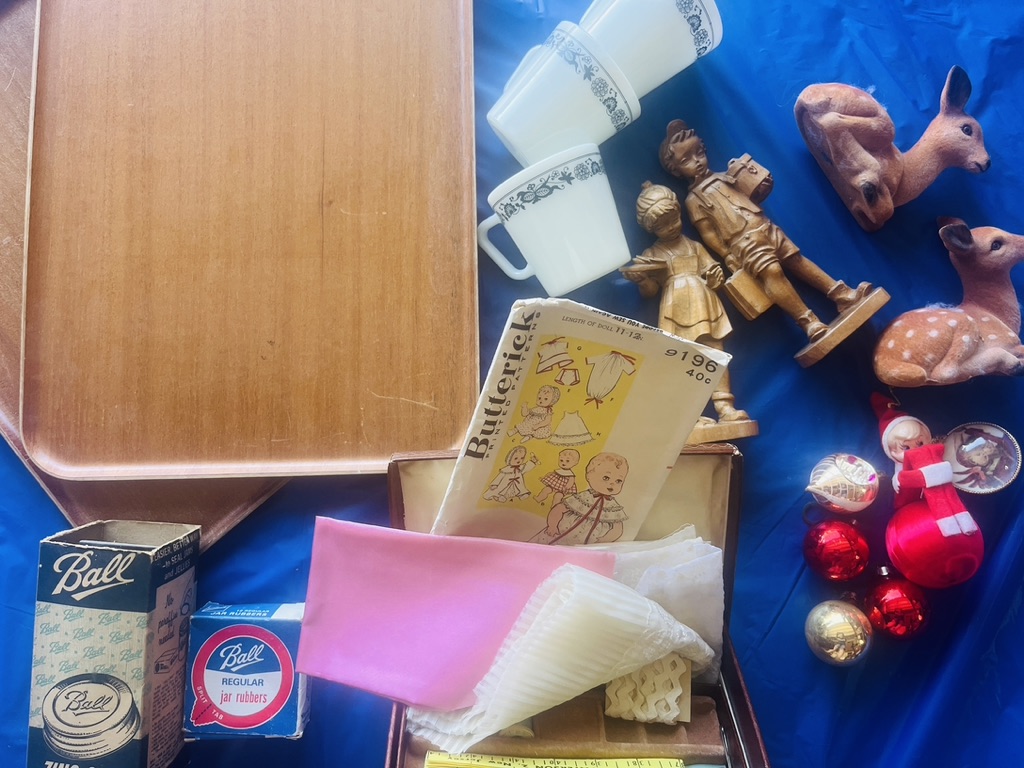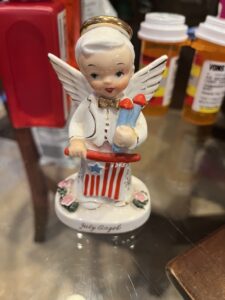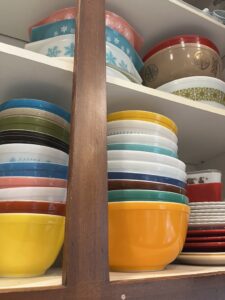
The Not-So-Glamorous Side of Selling Vintage (And how to Love it Anyway)
So, your collection has gotten out of hand? You’ve got more stuff in the garage than in your home? Maybe you’ve watched enough TikToks to think selling things online sounds like the perfect side hustle. That’s awesome!
But let’s talk first.
Starting out can be overwhelming. You might wonder: How much can I get for this? How do I handle shipping costs? How do I describe products well? The truth is, we all face ups and downs when selling online or in-store. It’s a learning process, and what works for me might not work for you—but here are some tidbits I wish someone had shared with me when I started.
1. Do Your Research First. Don’t just buy things because they look cool. Know if it’s worth something to someone else. Even popular items like Pyrex have pieces that aren’t in demand. Otherwise, you’ll end up with a storage unit full of unsold treasures.
2. Inspect Everything. A small chip or scratch can turn a treasure into trash—unless you list it as “adding character.” Be thorough. Examine every item before you buy, so you’re not stuck with damaged goods.
3. Be Honest in Your Listings. Describe items accurately. I once sold a black Pyrex bowl on Etsy. Despite carefully noting the nicks and providing photos, the buyer complained after receiving it, demanding a refund. I was new to Etsy, so I refunded him, but looking back, I realized he just wanted a free bowl. Lesson learned: stand by your listings, and don’t be afraid to block problem buyers.
4. Use Technology to Your Advantage. Apps can help you identify products and price them correctly. Check not just listing prices, but actual sales. Just because someone lists a dishrag for $100 doesn’t mean it’ll sell.
5. Know Your Costs. Factor in listing fees, credit card fees, shipping, packaging, and your time. Make sure you’re still making a profit after all that.
6. Master Shipping. Accurately price out shipping and packaging. Rates change, so adjust your prices accordingly. Don’t let shipping costs eat into your profits.
7. Keep Your Store Fresh. Update your listings regularly. New photos, fresh descriptions, or even temporarily removing items can make your shop feel alive. Think of it like a storefront—people want to see new things.
8. Connect Your Social Media. Link all your platforms to drive traffic to your shop. Every link is an opportunity for a sale.
9. Expect Breakage. Things will get damaged. It happens. Build in some wiggle room to absorb those losses without stress.
10. Keep It Fun. When I faced family health issues, I had to step back from my shop. The stress wasn’t worth it at the time. Now, I’m just enjoying the hunt again. Your business should bring you joy, not just income.
I hope these are helpful to you? I know they are pretty basic. But it is the basic stuff that sometimes can be missed. Reach out to me if you have questions. For me, it is about sharing the passion I have about vintage items that is really the basis of my shops and blog. Talking to my vintage loving friends out there is what it is all about.



